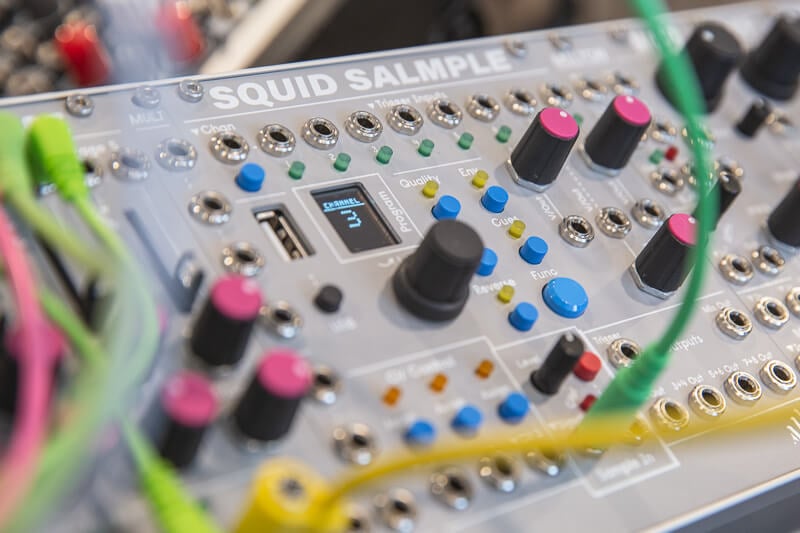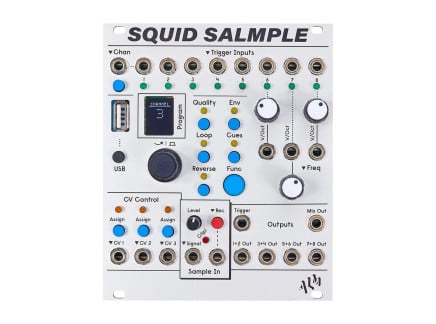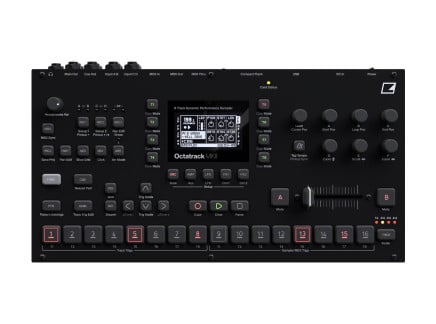A sampler is a device that can store and recall recorded audio information, otherwise known as samples. Samples can be loaded on the device by the manufacturer or user, depending on the model. Samples can be anything from acoustic pianos to field recordings to synthesized sounds—just about anything you can fit into the constraints of the sampler. From there, the samples can be played back in a number of different ways, sometimes from built-in sequencers, external MIDI controllers, or with gate signals when used with a modular synthesizer. Samplers allow artists who don't necessarily have the knowledge of how to play a traditional instrument to compose whole tracks using found or recorded sounds.
Let's start our journey in sampling by taking a quick look at some highlights of the history of sampling in the evolution of music technology.
History of Samplers
Sampling's earliest roots can be traced to the Tape Music movement, an umbrella term for several different early styles of sampling and sound manipulation, often with reel to reel tape machines. Tape music used recorded sounds as the foundation of compositions. At the time, magnetic tape was the most common form of recorded sound, and the easiest to manipulate. Sounds could be manipulated through various tape-based or electronic methods including splicing sounds together in a new order, adding reverb or delay, or playing the sounds in reverse. These tape manipulations would often be recorded onto a second tape recorder and then further processed and reinvented. Tape Music had many facets and subgenres, and two of the often-referenced schools of thought on tape music are Musique Concrète and Elektronische Musik.
Musique Concrète used naturalistic found sounds, environmental sounds, and even traditional instruments that would be recorded to tape. Much of the research and development of Musique Concrète came out of a Parisian studio called GRM. Composers such as Pierre Schaeffer, Iannis Xenakis, and Pierre Henry were some of the most famous proponents of Musique Concrète.
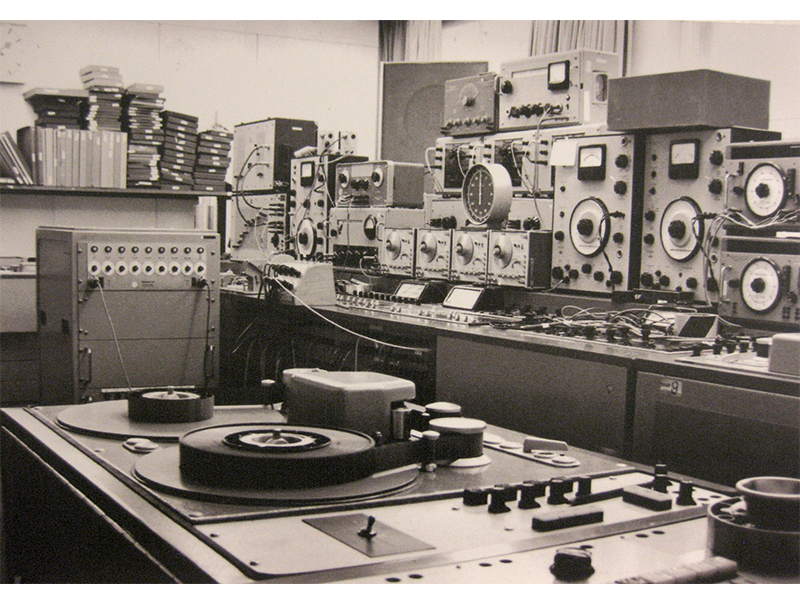
Elektronische Musik composers, on the other hand, did not only use naturalistic sounds, but also incorporated electronically generated sounds into their pieces. Primarily based out of Cologne's NWDR/WDR radio studio, composers such as Karlheinz Stockhausen used a wide range of found sound, environmental sound, and electronic test equipment in order to realize their compositions.
On the other side of the world, the original Buchla 100 synthesizer system was designed for the San Francisco Tape Music Center, an experimental arts collective whose work utilized tape as a crucial part of their compositional process.
Beyond the world of experimental music composition, tape gradually found its way into other corners of instrument design. The Mellotron was an early tape-based instrument that could play back sounds from different reels of magnetic tape—not unlike an electronic organ, but with pre-recorded samples as the sound source. It has a piano-style keyboard, and when a key is pressed, a tape corresponding to that key is pushed to a tape head. As the key is held, the tape moves over the tape head and the sound is played. Pressing the key down didn't necessarily mean the same exact sound was played—minor fluctuations in amplitude and pitch, referred to as "Wow and Flutter", occurred on each key press. Because it was all mechanical, pressing a key harder would press the tape against the playback head harder, resulting in a louder sound. The Mellotron was used by artists such as the Beatles, King Crimson, and Genesis.
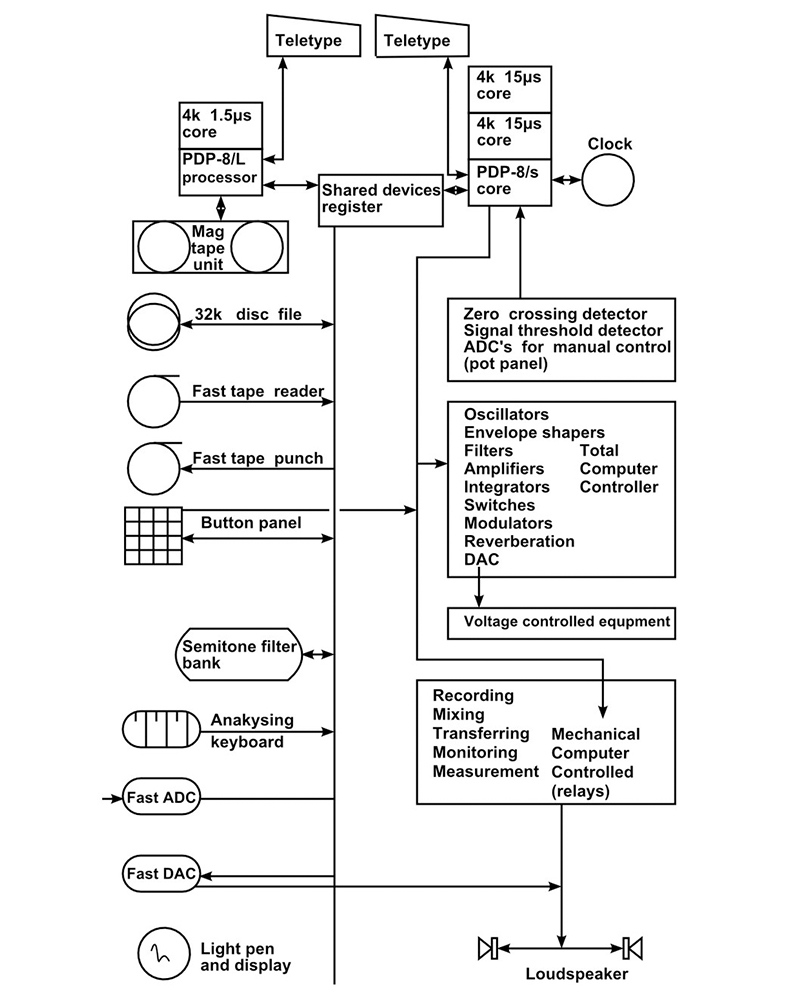 Musys signal flowchart
Musys signal flowchart
The EMS Musys, another oddity in the history of electronic instrument design, provided one of the earliest forays into digital sampling. Although now better-known for their VCS3 and Synthi, EMS started as a way to fund Peter Zinovieff's computer obsession. Using some of the first available private computers, Peter Zinovieff, Dave Cockerell, and Peter Grogno put together a mega synthesizer environment starting in 1969. It featured a bank of 64 filters that could be used as sine wave oscillators, or they could read and record frequency information from external signals. It could sample at 20 samples per second and then crudely reproduce / resynthesize those sounds using the sine wave oscillators. For comparison, modern samplers sample sounds at many thousands of samples per second (and ultimately reproduce sound in quite a different way).
In addition to the filters, it also featured six amplifiers, three DACs, six DC switches, 12 audio switches, three integrators, and a four-track Ampex tape deck. It had a read-only memory of about 12KB and 32KB of hard drive space. Using the Musys assembly language, a user could define parameters such as pitch, envelope shape, or waveform. Information could be processed at about 100 events a second with a precision of about 1ms. The final fate of Musys after EMS went out of business was a basement closet. Crudely disassembled with wire cutters and hacked to pieces, it was cannibalized for spare parts. The basement closet eventually ended up flooding, putting the final nail in the coffin of this piece of music history.
Commercial Digital Samplers
The first commercially available digital sampler was the Computer Music Melodian by Harry Mendell in 1979. It was a monophonic sampler that had 12-bit/22kHz resolution. It's probably best known for being featured on Stevie Wonder's Journey Through the Secret Life of Plants. It also had a feature that was not found on many samplers of this era: the ability to interface with modular synthesizers. The Melodian could pitch sync to external oscillators and monophonic samples could be triggered with gate signals. The marriage of modular synthesizers and samplers would not be seen for many years, until well after the introduction of Eurorack modular synthesizers.
The Fairlight Computer Musical Instrument, or CMI, was the first commercially available polyphonic digital sampler. Released in 1979, this early sampler was designed by Kim Ryrie and Peter Vogel, who are also credited as coining the term "sampling" in music. Although they originally wanted to create an analog synthesizer that was digitally controlled, the price of microprocessors was going down, while the performance was increasing. After experimenting with trying to synthesize the harmonic fundamentals of a sound, they eventually found recording a piano sound and playing it back at different pitches resulted in a much more natural sound than synthesized pianos of the time.
Equipped with a piano-style keyboard, light pen, display, QWERTY keyboard, and processor, the CMI was born. It represented a huge step forward for sampling technology. Samples could only be between half a second to about a second in length and had a maximum sample rate of 24kHz. Samples came on eight-inch floppy diskettes, with included sample packs such as a pack of orchestral sounds. The sample named ORCH5 has grown in popularity beyond the CMI and has been included in many sample packs. It was originally sampled from Stravinksy's Firebird Suite. Specifically, it is the hit at the beginning of the "Infernal Dance" section, pitched down a minor sixth and reduced in speed. This sample has become almost a cliche sound in hip hop and electronic pop, this distinctive, lo-fi orchestral hit.
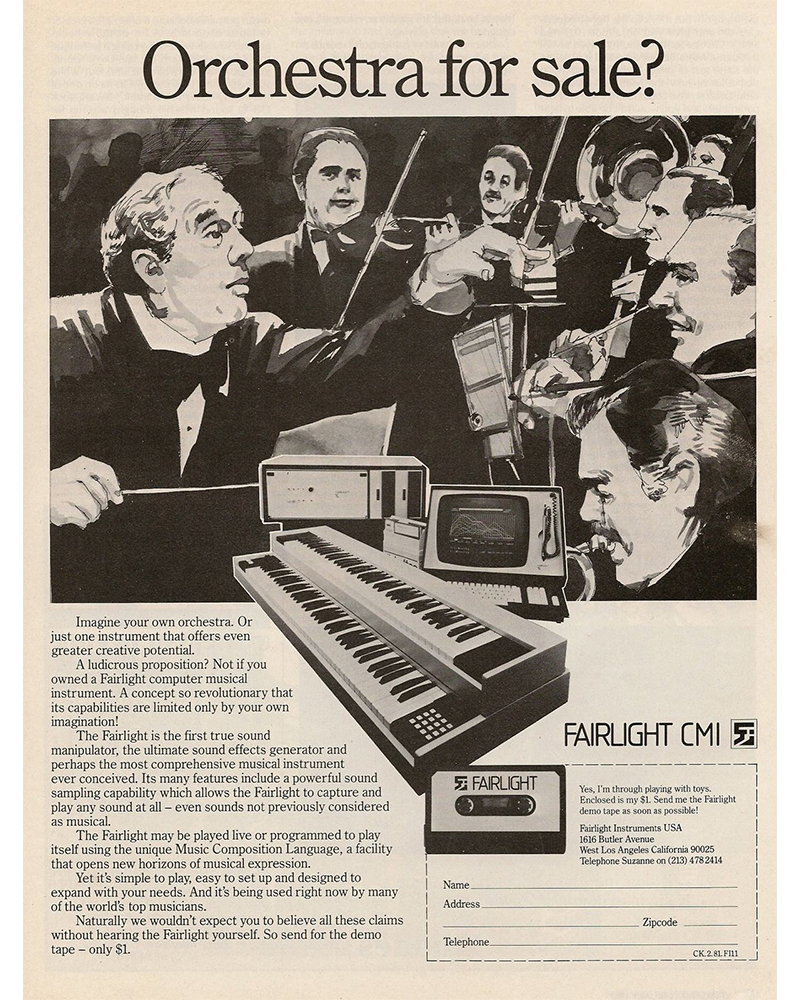 Ad for the Fairlight CMI
Ad for the Fairlight CMI
The Musicians Union would go on to call the CMI a "lethal threat" to its members. Although the composition language was criticized as being too difficult for the average musician and equipped with only 208kB of RAM, there was still significant interest in CMI. Today, the Arturia CMI V software faithfully recreates the feel of a Fairlight CMI with all of its quirks, and of course, it maintains the characteristic sound that so many people fell in love with.
The EMU SP-1200 is one of the samplers that revolutionized sampling in hip-hop. Pre-recorded sounds were originally utilized in hip hop by way of DJing, using records and beat juggling to create loops for MCs to rap over. The SP-1200 allowed for songs to be almost entirely produced using a single piece of relatively portable gear. It had the ability to save up to 100 patterns and 100 songs, but only 32 samples were possible, and only with a maximum total sample time of approximately 10 seconds and a maximum single sample time of 2.5 seconds. The 12-bit/26.04kHz sampling gave it a unique sonic character, which many say captured the sound of old vinyl records. One popular technique was to sample 33 ⅓ vinyl records at 45rpm and then play back at a slower speed, overcoming some of the sampling limitations of the SP-1200.
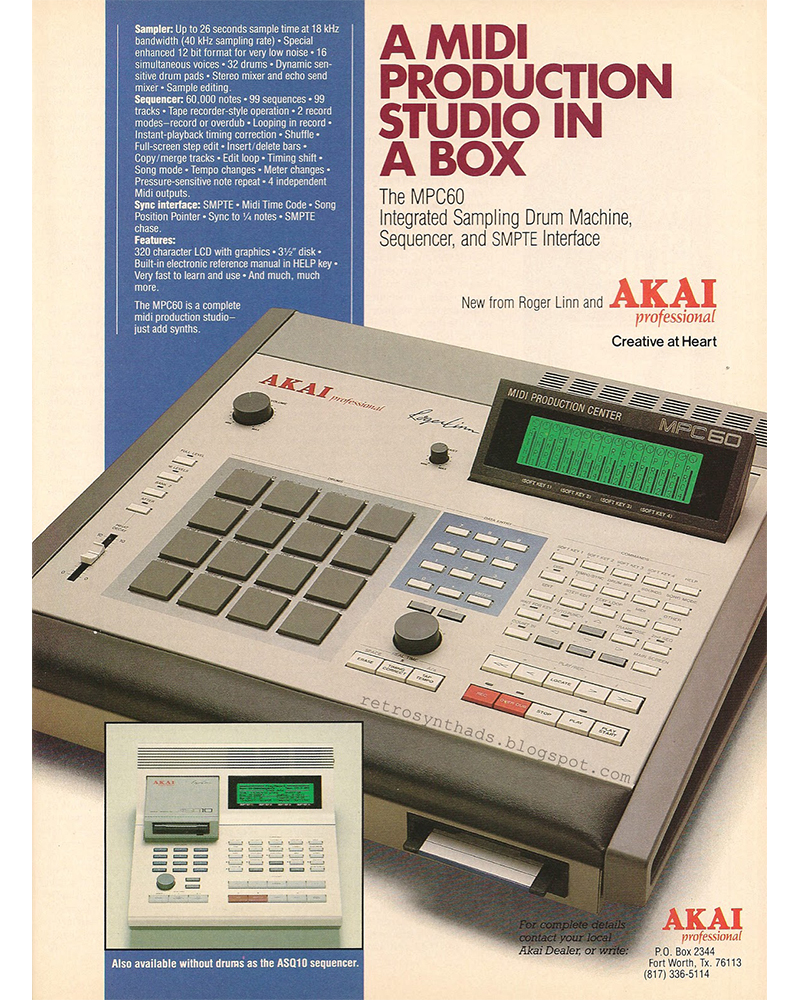 Early ad for the Akai MPC
Early ad for the Akai MPC
Another line of samplers that went on to have a huge impact on the landscape of hip hop and electronic music was the Akai MPC line, starting with the MPC-60. Although Akai had made a rack mount sampler, the S900, this was their first foray into standalone samplers. It was designed in conjunction with Roger Linn, maker of the LM-1 Drum Computer, the first drum machine to sample acoustic drums, and its successor, the Linndrum. With a bank of 16 velocity-sensitive pads, the Music Production Center allowed for easy and expressive playback of a group of samples. The MPC-60 let users add groove to sequences, moving beyond the 16th note grid of most drum machines of the time. By nudging certain steps out of time, the patterns became more human and imperfect. Conversely, out of time playing could be corrected using quantization. It had 13.1 seconds of sample time with 12-bit/40kHz resolution. Samples could be recorded, chopped, and assigned to pads. DJ Shadow's "Endtroducing…" was the first album entirely created by sampling preexisting sounds and was made primarily using the MPC-60.
Besides hip-hop, sampling became a common practice in dance music such as jungle and drum and bass. Using loops of soul and funk drummers in a break of a song, these snippets of drums could be looped and manipulated in order to create full backing tracks. Most famously, the "Amen Break" from the Winstons is perhaps the most sampled recording of all time, showing up in everything from Bjork to NWA to Aphex Twin. Other famously sampled drum breaks include Led Zepplin's "When the Levee Breaks" and James Brown's "Funky Drummer."
Roland's S-50, part of the S-series of samplers, came to the market in 1986. It featured a 12-bit resolution and variable sampling rate of 15-30kHz, with a range of sampling times from 28.8 to 14.4 seconds and a total of 756kB sample memory. It could hold up to 32 samples and featured a DSDD floppy disk drive that samples could be saved and loaded from. The editing capabilities were advanced for the time, but to really get into sample editing, users had to hook up an external CRT monitor and a special DT-100 digitizer tablet. Samples could be repitched, and the digitizer tablet allowed for drawing and editing of waveforms, envelopes, and the digital filters. A rack mounted version, called the S-550, came out shortly after, improving the sampling memory to 1.5MB and adding real-time filters, referred to as time-variant filters.
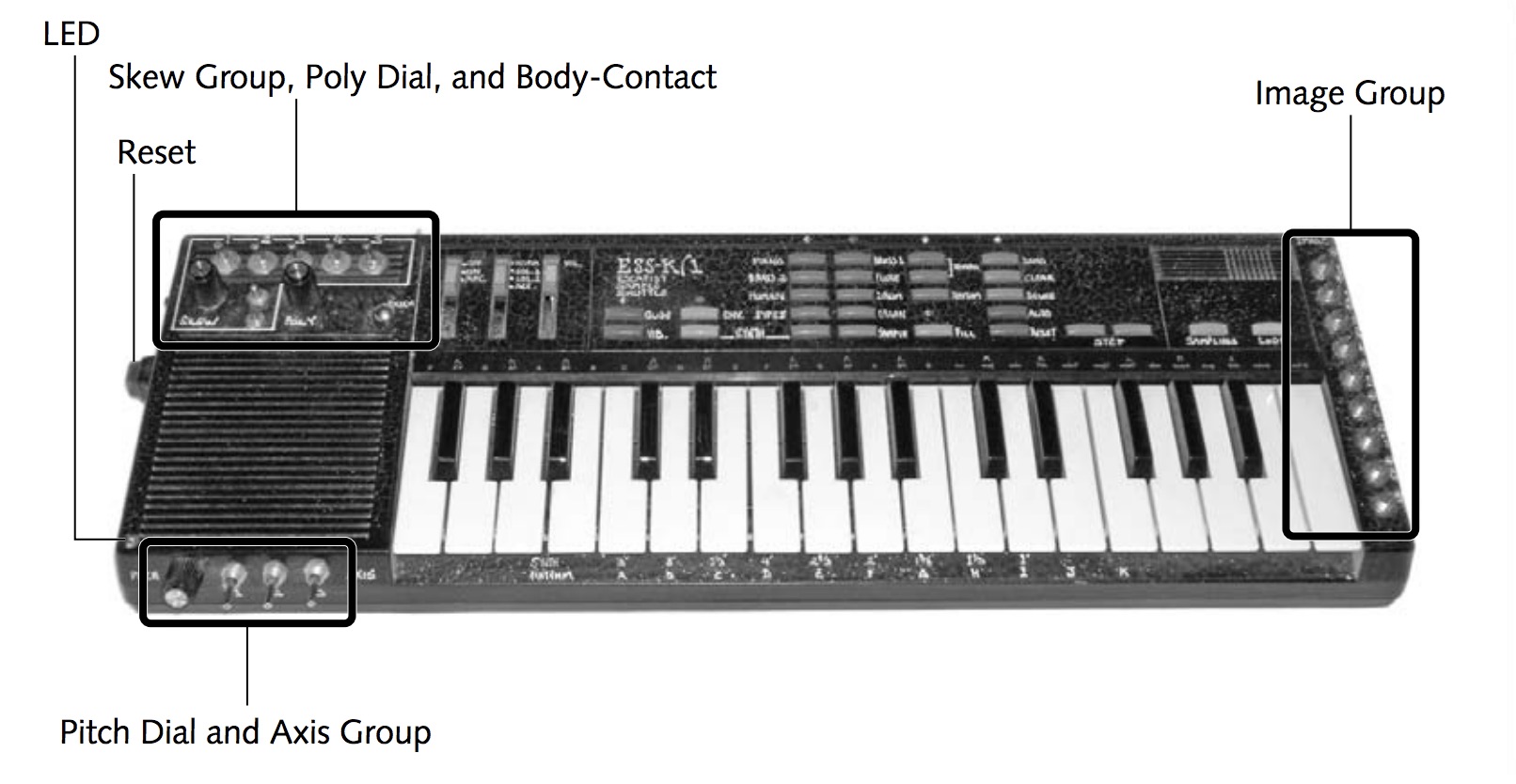
The sampler best-known to circuit benders, of course, is Casio's Sk-1 (see above for a unit modified by master circuit bender Reed Ghazala). Considered more of a toy than anything else by many musicians, this little sampling keyboard allowed for 8-bit sampling at a rate of 9.38kHz. It didn't have much sampling time or very good quality, but it was the first sampler that was commercially available to the general public, retailing at under $100. And in the end, it is generally not praised for its sampling ability, but rather the ability to circuit bend it, i.e. making connections on the circuit board that were never intended. This turns the unassuming miniature keyboard into a glitch machine, full of sputtering and mind bending sounds one would never think possible from this little keyboard.
Sampling Technology and Considerations
There are constraints on any sampler, based on the technology behind them. While theoretically a sampler could record any audio, there are specifications that define the individual behavior and personality of each sampler. Some of these include sample size, number of samples, and the audio codec.
If the same sample is played over and over, one right after another, the result sounds very mechanical and loses the sense of naturalism. One method to avoid this mechanical "machine gun" sampling is to incorporate round robin sampling techniques. Round robin sampling takes two or more versions of a sample or similar samples and assigns them to the same sampling channel. There are slight variations between the samples such as minor fluctuations in pitch or amplitude. Samples can be played linearly in order, or randomly selected for a less predictable result. If using a linear playback order, an odd number of samples in a 4/4 measure will make different samples to play back on different beats, resulting in a slightly less predictable sequence of samples.
Aliasing in sampling refers to distortion or artifacts that occur when a sample is reconstructed differently than the original source. The sampling rate defines the Nyquist frequency, which is the maximum frequency that can be recorded at a given sample rate. It is equal to half of the sampling rate, so if you're recording at CD quality, 44.1kHz, the Nyquist frequency is 20.05kHz. If there are any samples that exist above the Nyquist frequency, they are folded over to frequencies below the Nyquist frequency. The sample's new frequency is proportional to its frequency above the Nyquist frequency. If you have a Nyquist frequency of 12kHz (based on a 24kHz sampling rate), a signal with a frequency of 15kHz will be reinterpreted as 9kHz, or 3kHz below the Nyquist frequency. Nyquist aliasing can be avoided by using an anti-aliasing filter that blocks frequencies above the Nyquist frequency. However, intentional use of aliasing can also result in interesting transformations of your sound—so remember that testing the limits of your gear can lead to some creative, unique results.
Legality
I would be remiss if I wrote an article about sampling and didn't mention the legality of sampling. In theory, sampling of other artists' work must be cleared with the copyright holder in a process called "clearance". This is often a lengthy and expensive process, depending on the copyright holder in question. Many artists who once sampled without clearance have gone on to sue other artists who in turn sampled their work. Sampling has in some cases become a tool for artists who can afford to get clearance or fight legal cases against them. To circumvent legal issues, artists may recreate samples or disguise the sample with processing methods that turn the sample into a new entity.
Triggered Sampling in Eurorack
The kinds of samplers available in the Eurorack modular synth format cover a wide range of styles and design ethos. They range from small samplers with only basic controls to all-in-one instruments, with a wide and varied range of approaches in the middle. Over the last 10 years or so, microprocessor technology has advanced in performance, price, and size, allowing the recent wave of music technological advancements. One of these advancements was bringing digital sampling to Eurorack modular synthesizers. Early Eurorack samplers such as the Doepfer A-112, Make Noise Phonogene, and The Harvestman (now Industrial Music Electronics) Tyme Sefari Mk I would be considered low quality today, but represented a major breakthrough in the technology available at the time. Samplers come in a few varieties that are suited for different purposes. For simplicity, I've broadly divided them into two categories: triggered samplers and granular samplers.
Trigger-based samplers play samples when a trigger or gate event is received at a given playback input. These are often used for drum playback, but like any other sampler, any audio in the right format can be used. Examples of these include the ALM Busy Circuits Squid Salmple and 4ms Stereo Triggered Sampler. Depending on the model, you may have access to editing the pitch, length, and sample selection, with CV control over one or more of these settings.
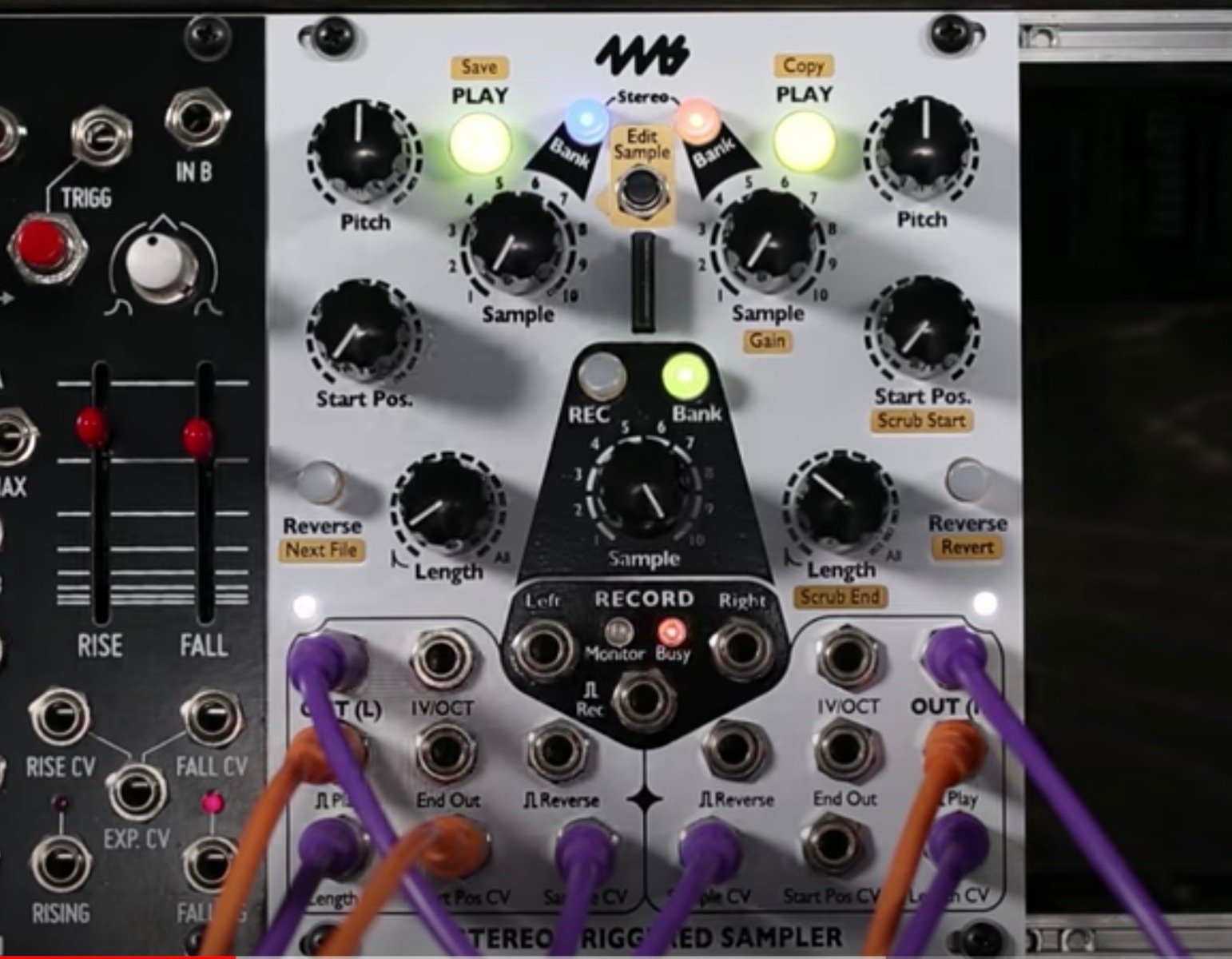 4MS STS in action
4MS STS in action
The 4ms Stereo Triggered Sampler is a two-channel sampler with extensive CV control over parameters. It can record, save, and load up to 600 samples on a microSD card. The STS accepts a variety of formats of samples up to 32-bit/96kHz WAV files. Controls include sample select, pitch, length, and start position, all of which are CV controllable. One handy feature is the ability to sequence the pitch of the samples using the 1V/oct CV input. Samples can track melodic sequences with the ability to calibrate the tracking to a wide range of sources. The length of the samples can go down even into microsound territory making a constant tone when the samples are looped. This blurs the line between triggered and granular sampling, but for our purposes, the STS is primarily a triggered sampler.
The Squid Salmple from ALM Busy Circuits is an eight-channel sampler that can sample both audio and CV signals. Samples can be loaded from a USB stick and eight samples can be active at once. It works great as a drum source with plenty of included drum sounds. Samples can be edited with parameters such as sample and bit rate, envelope, length, and pitch. Samples can also be looped, either forward, reverse, or forward/reverse ping pong. The start, end, cue, and loop point can be user defined, particularly useful for longer samples. Three CV inputs can be assigned to modulate the selected samples with internal attenuation and offset of incoming CV. Three of the sample channels also feature direct pitch control and 1V/oct tracking with chromatic or octave quantization. One feature the Squid Salmple lacks is the ability to CV control the sample selection, as a bank of eight samples have to be loaded into RAM at one time. However, the Squid Salmple features the ability to record and play back CV signals, allowing it to act as a complex modulation source with all the sample manipulation options available for the CV signals.
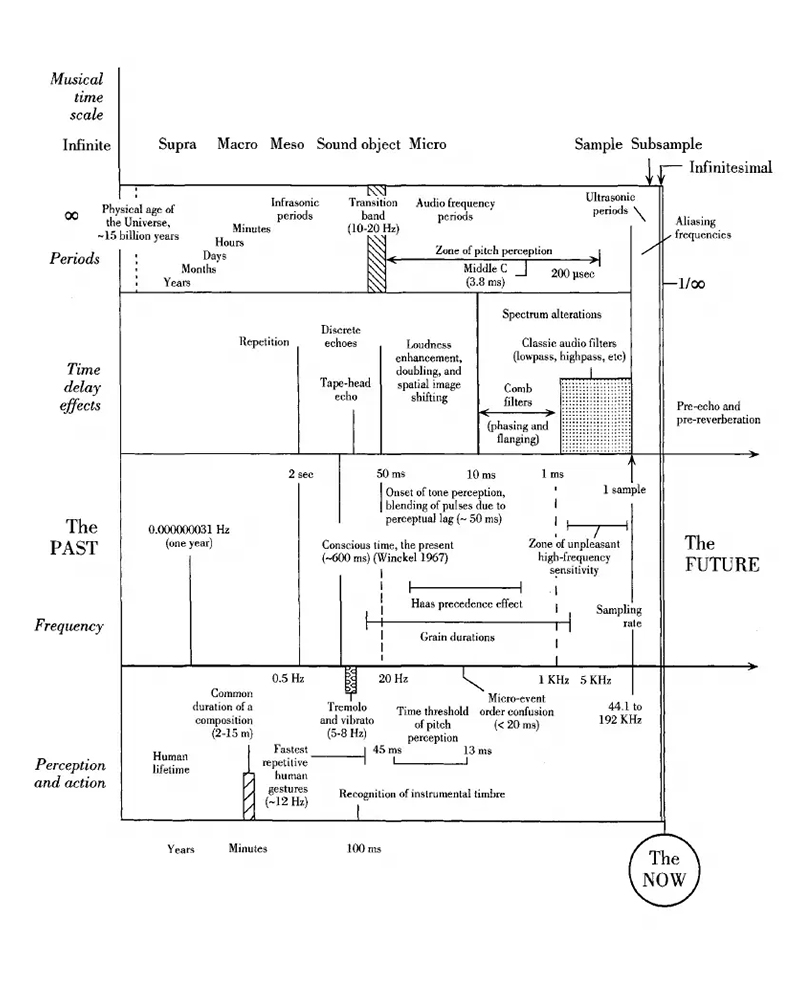 Musical time scales, from Roads's Microsound
Musical time scales, from Roads's Microsound
Granular Synthesis in Eurorack
There's a lot of overlap between samplers and granular synthesis, with many Eurorack samplers occupying both camps of functionality. Granular synthesis uses tiny chunks of sound between 1–100ms in duration. These small chunks of sound are often called grains, and can be mangled and recombined in order to synthesize new sounds. Single grains can be looped to create tones similar to the way an oscillator works. Multiple grains can be layered over each other to create complex and harmonically rich "clouds" of sound. The language surrounding granular synthesis originated with Iannis Xenakis in the 1960's and was later significantly expanded upon by Curtis Roads. Roads' book, Microsound, which is a groundbreaking piece of writing, providing an in-depth exploration of granular synthesis techniques and helped further shape the language used to describe the underlying concepts. Granular synthesis was not fully implemented in a real time applications until 1986, when Barry Truax used it in his interactive composition program, the PODX.
Grain windowing describes the fading between different grains. A slight slewing or sliding between grains may be added to smooth out the transition from one sound to another or the windowing may be purposely made to be sharp and abrupt based on the designer's intentions. The playback position within the sampled sound can be adjusted, emphasizing different harmonics within a sound. Often, granular synthesizers are paired with random modulation sources. In some cases the modulation can be built into the granular effect, allowing for complex granular processing using a single module or piece of software.
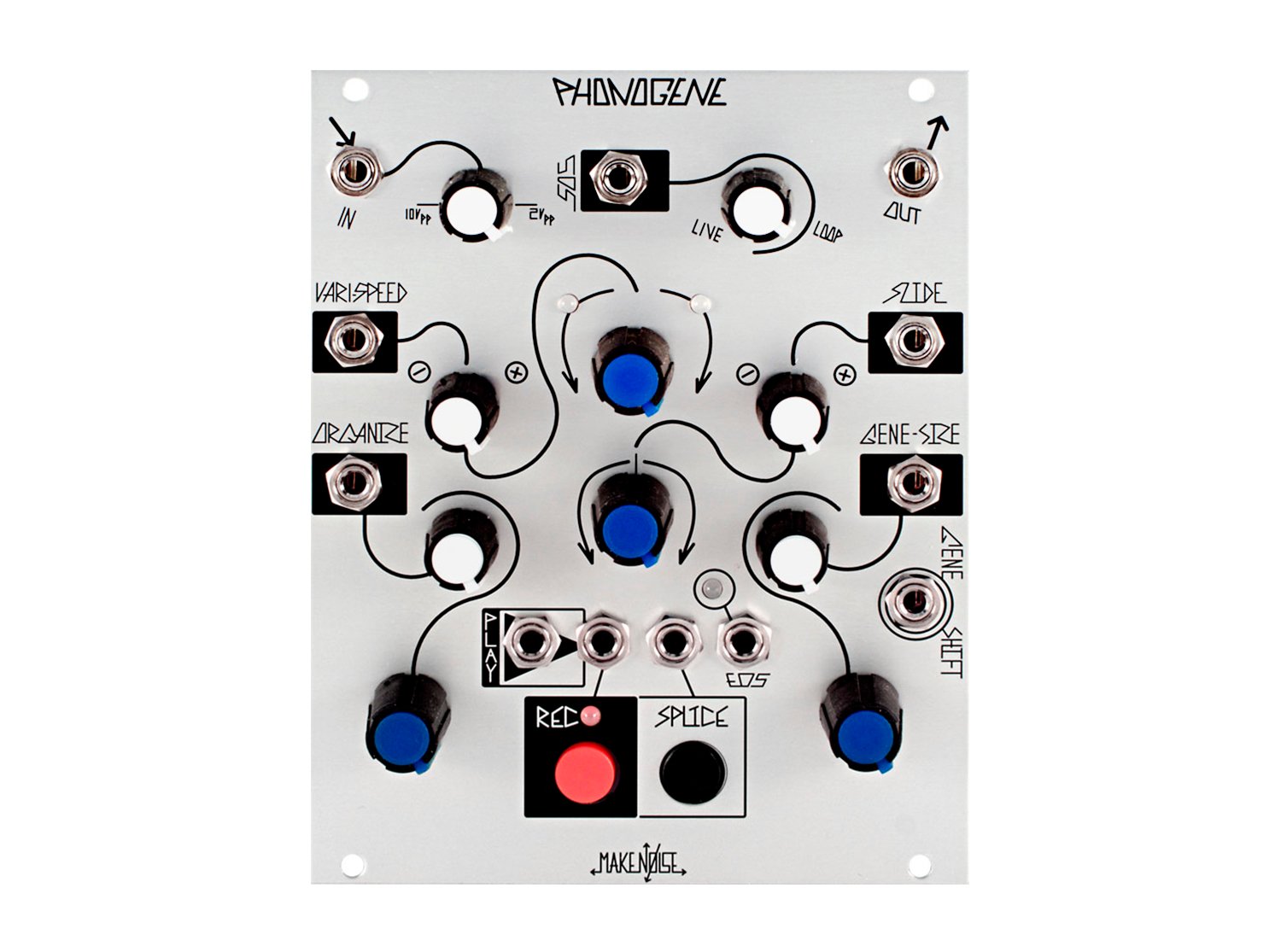 The Make Noise Phonogene
The Make Noise Phonogene
The Make Noise Phonogene was one of the early Eurorack samplers/granular devices, and was named after a device designed by Pierre Schaeffer. Schaeffer's original Phonogènes could control the length, pitch, volume envelope, and timbral characteristics of a recorded sound. Three Phonogènes were developed: a Chromatic version, with a one-octave keyboard; Sliding, which provided continual fluctuation of tape speed using a control rod; and the Universal version, which decoupled pitch variation from time variation. The Make Noise Phonogene was designed as a digital emulation of the tape recorder as a musical instrument. The sampling is crude by today's standards, but it gives the Phonogene a unique character, like the SP-1200. The speed determines the sample resolution and the maximum length of the recorded sound. The speed and direction of playback (forward or reverse) are both controlled by the vari-speed setting much like a reel to reel tape recorder. Controls for splice points (non-destructively organizing the sample into smaller sections), gene size (shrinking the playback window), and slide (moving the grain window around the audio buffer), brings together both tape and granular methods of audio manipulation.
Make Noise revised the design in 2017 with the Morphagene. The biggest change from the Phonogene, besides the sampling resolution, was the addition of an SD card. Sounds could now be recorded and played back from the SD card, greatly expanding the possibilities for sonic exploration. Additionally, Make Noise added Morph, which overlaps up to four genes for a thick, textured sound. Expanding from the mono input and output, the Morphagene is equipped with stereo input and output. The Morphagene can interact with the rest of your modular with its EOSG trigger output and envelope follower CV output, letting you sync and modulate parameters of your other modules.
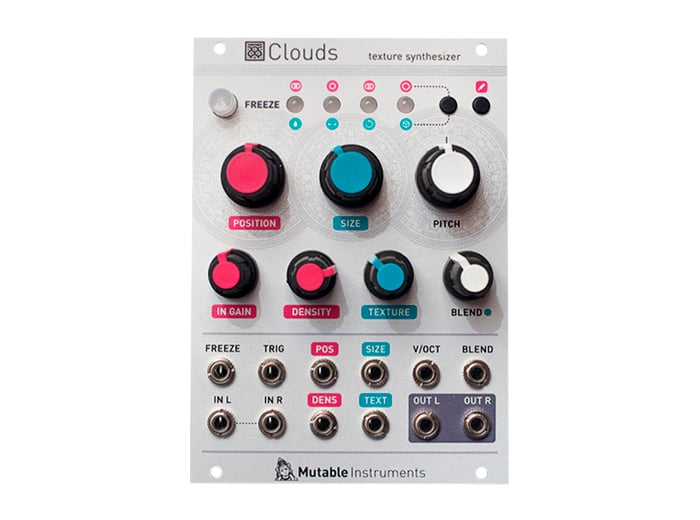 Mutable Instruments Clouds
Mutable Instruments Clouds
One of the best-known and often-emulated Eurorack modules is Clouds from Mutable Instruments. Although Émilie Gillet discontinued its production, it has gone on to inspire many designers and clone builders. Focused on real-time granularization of audio signals, Clouds adds texture, space, and depth to anything that you run through it, turning audio into a rich granular swarm of textures, Clouds generates up to 60 concurrent grains. From the now defunct product page, "A list of things Clouds is not trying to be: a sample player, a slicer, a looper." While not a sample player in the strictest sense, Clouds opened up a new world of granular synthesis, granular processing, and audio manipulation in Eurorack modular. Since, many makers have begun releasing their own adaptations on Clouds's code and core functionality, and of course, later Mutable Instruments introduced their own considerably expanded take on the Clouds concept: the now-discontinued (yet legendary) Beads.
Arbhar from Instruo is another granular processor that uses the Lexer method of granular processing. Between 2000–2012, Sebastian Lexer developed this method of granular synthesis using Max/MSP for his piano+ patch as a way to interface granular synthesis with acoustic instruments for electroacoustic sounds. Focusing on sustained drones developing out of a single acoustic sound, this processing method can make a piano a drone instrument with a single key press. Playing multiple grains out of phase gives the illusion of a single sustained sound, even with as few as eight 80ms grains. Arbhar can play atr total of 44 polyphonic grains at once, more than enough to develop a swarm of audio from simple building blocks of electric or acoustic sounds. Six buffers can each hold 10 seconds of audio apiece and the position of the playback window can be scanned linearly or with the internal random source. The pitch of the processed grains can also be randomly affected, either with unquantized or quantized random pitch deviation. A rather unique feature of Arbhar is a condenser microphone, making it simple to interface acoustic sounds or voices into the granular playground.
Other Samplers
Outside the Eurorack format, Elektron has been on the forefront of modern hardware samplers, with offerings such as the Octatrack, Digitakt, and Model:Samples. With integrated sequencers, crisp OLED screens, and intuitive layouts, their devices open up the sampling landscape for modern musicians. The Octatrack MkII is an eight-channel sampler that can slice, rearrange, and transform audio into whole songs. Internal effects, LFOs per track, and comprehensive sequencing options make the Octatrack a sampling powerhouse. The Digitakt is more focused on drum sampling, although with the ability to record external samples, it can sequence any sound you want. The Model:Samples takes the Elektron sampling and sequencing architecture and brings it to an affordable package with many of the controls on one knob or a simple key combination away.
Akai has continued the MPC line into the 21st century with several models currently available. These range from powerful workstations such as the MPC X to compact MPC One and MPC Live II, with a wide range of functionality and power. Retaining the 4 x 4 grid of pads, these samplers build on the legacy set forth by their earlier counterparts. Upgrades include more sampling time and higher sampling rates, plus touch screens and CV/gate integration on some models.
And of course, the recently-released Polyend Tracker is a unique sampler all its own, borrowing workflows from classic tracker softwares to allow the creation of everything from straightahead rhythms to spastic, intricate rhythms reminiscent of Drumcell and Venetian Snares. It allows loading samples or recording them directly into the unit—and even features a built-in FM radio which can act as a sample source. Though its approach is definitely esoteric, it is capable of a huge range of sounds, and is quickly proving to be a hit in rhythmically-oriented hardware setups.
Sampling and sample-based music brought a new method of music making to the masses. Gone are the constraints of playing of a musical instrument—technical skill is no longer a prerequisite for music making, and these new interfaces provide a completely new way of developing skill and artistry. Artists and musicians who use samples become curators of sound, where choosing and manipulating audio becomes its own art form. Samples can be anything, the sound of a train passing, an old church organ, your latest modular synthesizer patch...the possibilities are endless. Sampling unlocked a new way of relating to music, a new way of thinking of the world around us and the sounds that exist in the ordinary spaces of life or how we relate to a piece of recorded music.
To further explore the ways you can gather samples from the everyday world around you, check out our introduction to field recording article. It explores some of the techniques and methods of recording the nuances of the world around us.

